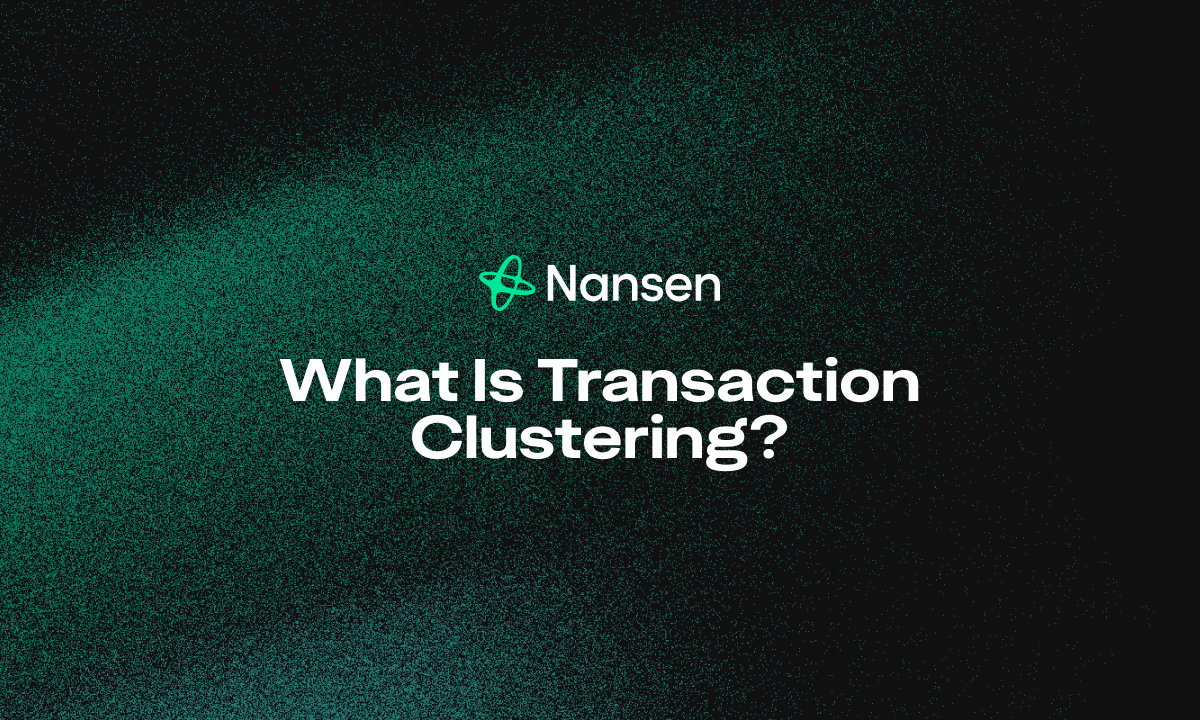Transaction clustering (also called address clustering) is the process of identifying and grouping multiple cryptocurrency addresses that likely belong to the same entity or individual. While blockchain addresses are pseudonymous rather than truly anonymous, clustering techniques can connect the dots between seemingly unrelated transactions.
Key point: Transaction clustering turns blockchain's pseudonymity into potential identifiability by connecting related addresses.
This technique forms the backbone of blockchain analytics, allowing investigators, researchers, and companies to map relationships between addresses and understand transaction flows across the network.
How Transaction Clustering Works
Transaction clustering relies on several techniques and heuristics:
The Common Input Ownership Heuristic: This is the most fundamental clustering method. It assumes that if multiple addresses are used as inputs in the same transaction, they're controlled by the same entity. Why? Because you need the private keys for all those addresses to create such a transaction.
For example, if addresses A, B, and C are all used to send funds in a single Bitcoin transaction, the system infers they belong to the same owner.
Change Address Analysis: In Bitcoin's UTXO model, transactions often generate "change" that returns to the sender at a new address. Clustering algorithms can identify these change addresses through transaction pattern detection.
Address Reuse: When someone uses the same address multiple times (despite best privacy practices advising against this), it creates clear patterns that clustering can detect.
Behavioral Patterns: Timing of transactions, typical amounts transferred, and recurring patterns can further strengthen clustering analysis.
Real-World Applications of Transaction Clustering
Transaction clustering isn't just theoretical — it powers several critical functions in the crypto ecosystem:
Law Enforcement: Government agencies use wallet clustering to track illicit funds, investigate money laundering, and build cases against criminal organizations.
Compliance: Exchanges and financial institutions employ blockchain analytics tools for Know Your Customer (KYC) and Anti-Money Laundering (AML) compliance.
Market Intelligence: Researchers use transaction linkage to understand whale movements, exchange flows, and market dynamics.
User Protection: These techniques help track stolen funds after exchange hacks or scams.
Privacy Implications for Crypto Investors
As a crypto investor, transaction clustering has direct implications for your privacy:
Your transactions may be more traceable than you think. Even if you're using different addresses, clustering techniques might still link them back to you.
KYC information at exchanges creates "identity anchors." Once your identity is linked to certain addresses through an exchange's KYC process, blockchain forensics can potentially track your activity across the network.
Simple practices can significantly improve your privacy Using coin-join services, avoiding address reuse, and being careful about transaction patterns can help maintain better privacy.
Limitations of Transaction Clustering
While powerful, transaction clustering isn't perfect:
False positives happen. Clustering algorithms sometimes incorrectly group addresses that don't belong to the same entity.
Privacy technologies create challenges. Mixers, coin-join implementations, and privacy coins like Monero significantly complicate clustering efforts.
Large exchanges create "attribution dead ends." When funds move through major exchanges with millions of users, attribution often becomes impossible without the exchange's internal data.
Tools and Companies in the Transaction Clustering Space
Several companies have built sophisticated blockchain analytics platforms that leverage transaction clustering:
- Chainalysis
- Elliptic
- CipherTrace
- TRM Labs
- Crystal Blockchain
These companies provide services to law enforcement, financial institutions, and crypto businesses to track funds and meet regulatory requirements.
Protecting Your Privacy as a Crypto Investor
If privacy concerns you, consider these practical steps:
- Use different addresses for different transactions
- Consider privacy-enhancing tools like coin-join for Bitcoin
- Understand that transactions on public blockchains are never truly anonymous
- Be aware that mixing services may create regulatory complications
Answering Your Questions About Transaction Clustering
What is address clustering and why is it important in crypto analysis?
Address clustering identifies connections between seemingly separate blockchain addresses. It's crucial for regulatory compliance, criminal investigations, and understanding market movements.
How do analysts group blockchain addresses or transactions together?
Analysts use heuristics like the common input ownership principle, pattern recognition, and entity resolution techniques to connect related addresses.
What is the common input ownership heuristic in Bitcoin?
This fundamental principle assumes addresses used as inputs in the same transaction belong to the same owner, since creating that transaction requires having the private keys to all input addresses.
Can transaction clustering compromise user privacy in cryptocurrency networks?
Yes, effective clustering can significantly reduce the privacy benefits of using multiple addresses, potentially linking your entire transaction history together.
How does transaction clustering help in anti-money laundering on the blockchain?
It allows compliance officers to trace funds across multiple hops and addresses, identifying suspicious patterns and potentially flagging transactions connected to known illicit activities.
Transaction clustering represents the ongoing balance between blockchain transparency and user privacy. As a crypto investor, understanding these techniques helps you make more informed decisions about your digital asset management and privacy strategies.




